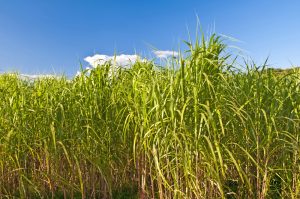Researchers with the U.S. Department of Energy’s (DOE’s) Argonne National Laboratory are using computational modeling to predict which counties in Illinois could see increases in soil organic carbon from crops such as switchgrass for biofuels. Increasing carbon stored in soil is one way to help mediate the amount of carbon dioxide released into the atmosphere. The Renewable Fuel Standard (RFS) requires the use of advanced biofuels and feedstocks like switchgrass that can grow on a range of crop and marginal lands across the country. And because Earth’s soil stores about three times as much carbon as the atmosphere, these deep-rooted plants that return season after season might also help reduce greenhouse gas emissions before they are even harvested for fuel by increasing the amount of carbon stored in the soil.

Switchgrass is one of the five crops modeled for local soil carbon sequestration rates in an Argonne study that predicts the impact of different biofuel crops on soil carbon across the country. (photo credit: hjochen/Shutterstock)
The Argonne researchers note that for bioenergy crops in particular, modeling land types and local climates at high spatial resolution is important because the yield of the crop and its impact on soil carbon stocks can vary significantly across the country. The study, published in Global Change Biology – Bioenergy, the team combined county-level crop yield, weather data and soil data at depths relevant to bioenergy crops. The researchers than used a soil carbon model to calculate sequestration rates. This study was done in collaboration with Steffen Mueller at the University of Chicago, Michelle Wander at the University of Illinois at Urbana-Champaign and Ho-Young Kwon at the International Food Policy Research Institute. The results are contributing to DOE’s third Billion-Ton report.
Researchers modeled soil carbon sequestration rates for five crops: corn and four energy-dense crops including switchgrass, poplar, willow and Miscanthus. The production of each species was modeled on four types of land, including cropland, cropland pasture (which fluctuates between producing crops and serving as pastureland) and flong-standing undisturbed grassland and forest — totaling 20 land scenarios depicting different initial and final land uses or covers. Researchers also considered changes to soil carbon stocks when 30 percent of the corn stover remaining after corn harvest is collected, which is likely to contribute to future biofuel production and can also affect carbon stocks.
By modeling soil carbon at a depth of 100 centimeters rather than the standard 30, the study results represent the deeper root systems of crops like switchgrass and poplar trees that transport carbon below the topsoil, unlike more shallow-rooted row crops like corn. The team also collected detailed data on local weather patterns, soil conditions, historical land use and local crop yields for each county, as well as data from bioenergy crop field trials conducted by other agencies and national laboratories.
For bioenergy crops in particular, modeling land types and local climates at high spatial resolution is important because the yield of the crop and its impact on soil carbon stocks can vary significantly across the country.
“By doing this type of analysis we can find areas where bioenergy crops can have positive environmental effects — but also hotspots where growing bioenergy crops may cause a decline in soil carbon,” said Argonne postdoctoral researcher Zhangcai Qin, who is examining the environmental effects of biofuel production.Supported by local data, county-by-county modeling results confirmed that grasslands and forests generally have richer soil with larger carbon stocks and will contribute to greenhouse gas emissions if transitioned to bioenergy crop production. On the other hand, converting some cropland or cropland-pasture to bioenergy crops like switchgrass and Miscanthus can help reduce greenhouse gas emissions.
Results also revealed a trend for the tree species poplar and willow. Switchgrass and Miscanthus exhibited a higher rate of carbon sequestration than the tree species across the country, mainly because the tree species grow more slowly than cellulosic grasses and store less carbon in the soil. Notably, results show soil carbon on cropland can benefit from bioenergy crops in large areas of the country, particularly by planting Miscanthus in the Midwest and Pacific Coast and switchgrass in the Southeast.
To further understand the net carbon impact of biofuels from the farm to fuel emissions, the researchers incorporated soil carbon modeling results into Argonne’s Greenhouse Gases, Regulated Emissions, and Energy Use in Transportation (GREET) model, which evaluates the full life cycle of energy consumption and emissions of different transportation fuels, including biofuels. For example, when soil organic carbon changes were included in the GREET model, ethanol produced from deep-rooted Miscanthus showed the potential to sequester carbon on a life-cycle basis.

